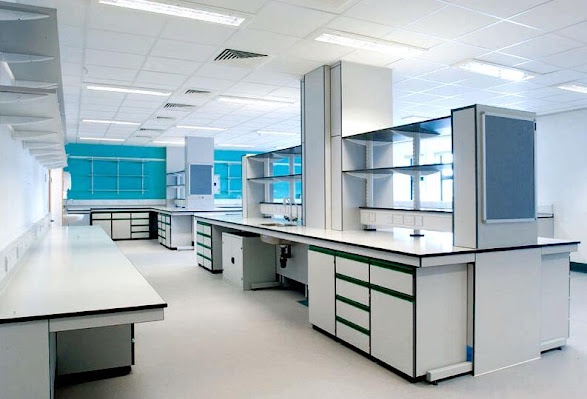Introduction:
Laboratories are dynamic environments where scientists and researchers spend a significant amount of time conducting experiments, analyzing data, and performing various tasks. To enhance productivity and ensure the well-being of laboratory personnel, it is crucial to prioritize proper ergonomic design in laboratory furniture. Ergonomics involves the study of designing equipment and systems that fit the user, considering their physical and cognitive capabilities, to promote comfort, efficiency, and safety. In this blog, we will explore essential considerations for achieving optimal ergonomic design in laboratory furniture.
1.Adjustable Workstations
One of the fundamental principles of ergonomic design is providing adjustability to accommodate individuals of different heights, body types, and working preferences. Laboratory workstations should feature adjustable desks, chairs, and monitor stands to allow users to customize their workspace according to their specific needs. Adjustable workstations enable users to maintain proper posture, reducing the risk of musculoskeletal disorders and fatigue.
2.Optimal Work Surface Heights
The height of laboratory work surfaces is a critical factor that directly affects the comfort and efficiency of laboratory personnel. Different tasks may require varying work surface heights. For instance, a higher surface may be suitable for writing or conducting experiments while standing, whereas a lower surface is preferred for precision work that requires sitting. Designing laboratory furniture with adjustable work surface heights empowers users to work comfortably in various positions and prevent strain on their backs, necks, and arms.
3.Supportive Seating
Given that laboratory personnel often spend extended periods performing intricate tasks, ergonomic seating is essential to promote good posture and reduce the risk of injuries. Laboratory chairs should feature adjustable height, backrests, and lumbar support. The seat pan should be well-padded and contoured to provide comfort and encourage proper weight distribution. Additionally, casters or wheels on chairs can enable easy movement and accessibility within the laboratory space.
4.Adequate Storage Solutions
Efficient organization of laboratory equipment, tools, and supplies contributes to a clutter-free workspace, improving ergonomics. Laboratory furniture should include ample storage options that are easily accessible to minimize reaching or excessive bending. Cabinets, shelves, and drawers should be designed to accommodate frequently used items at eye level, reducing strain on the neck and back. Ergonomically designed storage solutions facilitate smooth workflow and promote a tidy laboratory environment.
5.Task-Specific Design
Different laboratory activities entail unique requirements, necessitating task-specific furniture design. Ergonomic principles should be applied to tailor laboratory furniture to specific tasks, such as microscope workstations, fume hoods, or chemical storage areas. For instance, an ergonomic microscope workstation should provide adjustable eyepieces, height, and an armrest to reduce strain on the neck and wrists during extended periods of use. Task-specific designs optimize efficiency and minimize the risk of repetitive strain injuries.
6.Adequate Lighting
Proper lighting is crucial in laboratory environments to minimize eye strain, enhance visibility, and promote accuracy in observations and experiments. Laboratory furniture should be designed to incorporate appropriate lighting options, including adjustable task lighting or overhead lighting systems. Lighting should be evenly distributed, minimizing shadows and glare on work surfaces. Ergonomic lighting design ensures a well-lit workspace that contributes to user comfort, safety, and productivity.
Conclusion
Investing in proper ergonomic design for laboratory furniture Libya is a wise decision that prioritizes the well-being and efficiency of laboratory personnel. By incorporating adjustable workstations, optimizing work surface heights, providing supportive seating, implementing adequate storage solutions, incorporating task-specific designs, and ensuring proper lighting, laboratories can create an environment that promotes comfort, reduces the risk of injuries, and enhances productivity. Ergonomic laboratory furniture not only benefits individual users but also contributes to the overall success of scientific endeavors by enabling scientists and researchers to focus on their work with minimal physical strain.
Reference Link(OriginallyPosted: https://ziebaqlibya.blogspot.com/2023/06/designing-ergonomic-laboratory.html


No comments yet